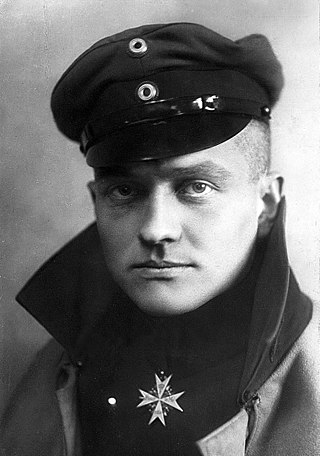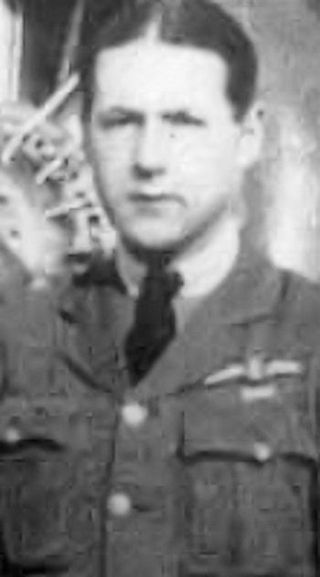
The following are lists of World War I flying aces. Historically, a flying ace was defined as a military aviator credited with shooting down five or more enemy aircraft during aerial combat. The term was first used by French newspapers, describing Adolphe Pégoud as l'as, after he downed seven German aircraft.
Ronald Malcolm Fletcher was an English World War I observer/gunner ace in two-seater fighters who, in conjunction with his pilot, Lt. Samuel F.H. Thompson, gained 26 confirmed victories. He was notable for the fact that all but one of these victories were over enemy fighter aircraft.
Captain Francis Richard Cubbon was an aerial observer and flying ace in the First World War. In conjunction with his pilots, he was credited with 21 aerial victories.
Lieutenant Malcolm Graham Stewart Burger was a World War I flying ace credited with five victories. He became an acting Captain in November 1918, and remained in the Royal Air Force after war's end.
Lieutenant Llewelyn Crichton Davies was a Welsh World War I flying ace credited with five aerial victories.
Squadron Leader William Harrop was a British World War I flying ace credited with five aerial victories while flying as an enlisted observer. He returned to RAF service in World War II, attaining the rank of squadron leader.
Lieutenant Albert Victor Tonkin was a World War I flying ace credited with six aerial victories. He worked as a grocer pre-war. He originally joined No. 10 Machine Gun Company in the Australian Imperial Force. On 19 September 1917, he joined 1 Squadron AFC and was posted to Egypt for training. He re-joined the squadron as a pilot on 10 January 1918; he flew Royal Aircraft Factory BE 2Bs against the Turks and Germans. He scored six confirmed victories, and had three unconfirmed victories on 22 July 1918, when he strafed three Albatros D.Vs he had forced to land. On 10 August, he persisted in chasing a Rumpler 50 miles (80 km) in an attempt to bring it to battle. On 13 August, engine trouble forced Tonkin and his observer to land. They were captured by local Arabs, who ransomed them back to the British for a hundred sovereigns. On 19 September, they were brought down by anti-aircraft fire and taken prisoner, only to be repatriated by rescuing cavalry.
Major Harry Alison Wood MC was a Canadian World War I flying ace credited with six aerial victories.
Sergeant Ernest Arthur Deighton was an English World War I observer/gunner flying ace credited with 15 confirmed aerial victories; all but one of them was against enemy fighters.

Lieutenant Kenneth Russell Unger was an American World War I flying ace credited with fourteen aerial victories. His candidacy rejected by his own nation, Unger applied to the British Royal Flying Corps for military pilot training in June 1917. Once trained, he was assigned to the Royal Naval Air Service (RNAS). As the RNAS was merged into the Royal Air Force, Unger scored his aerial victories between 26 June and 1 November 1918. In later life, Unger remained involved in aviation and served again during World War II. He also joined the U.S. Navy Reserves, rising to the rank of rear admiral.
Captain Arthur Gerald Knight was a British World War I flying ace credited with eight aerial victories. He was under attack by Oswald Boelcke and Erwin Böhme when they collided, causing Boelcke's death. Two months later, Knight would fall under the guns of Manfred von Richthofen, who had also been in the dogfight when Boelcke was killed.
Captain Reginald George Malcolm was a Canadian flying ace during World War I. He was credited with eight aerial victories scored during March, April, and May 1916.

